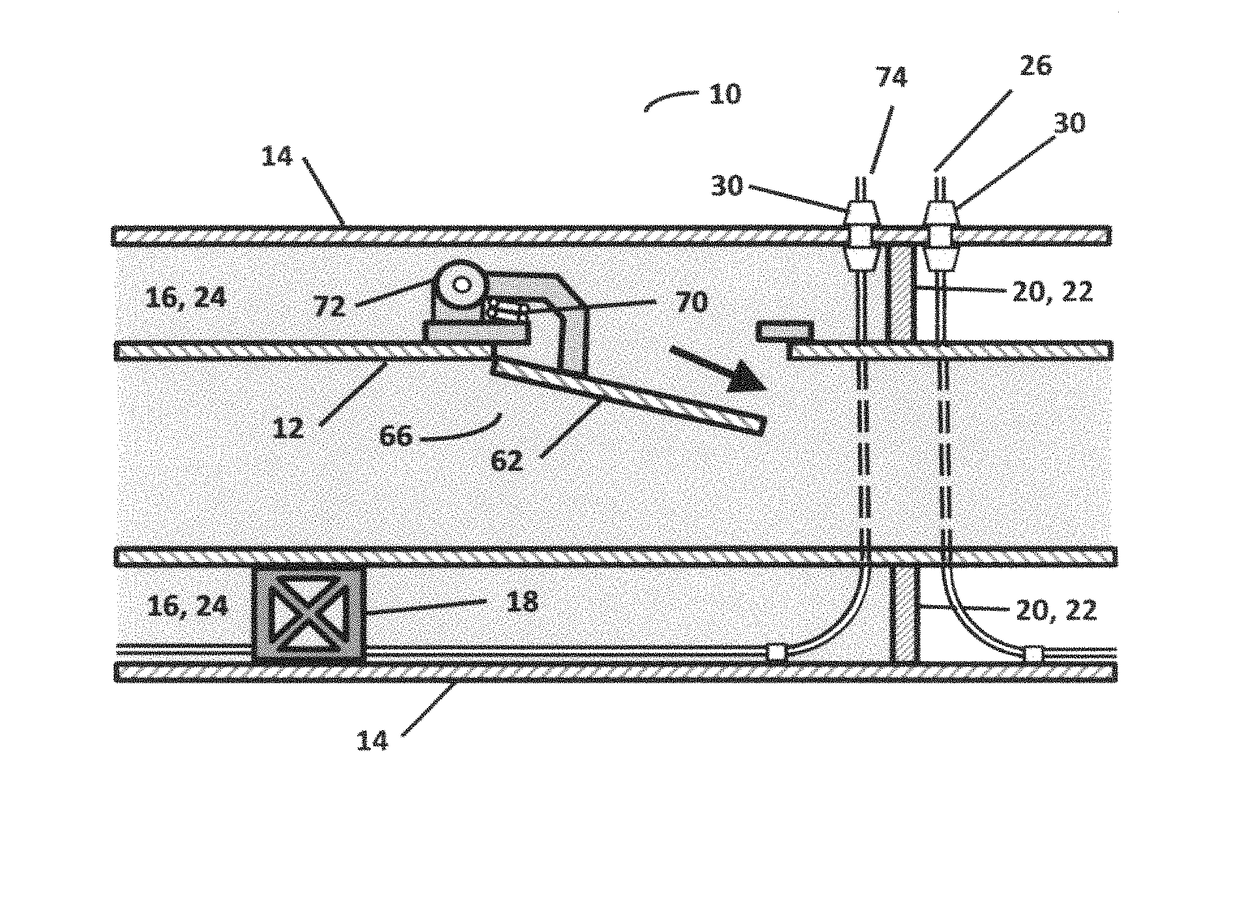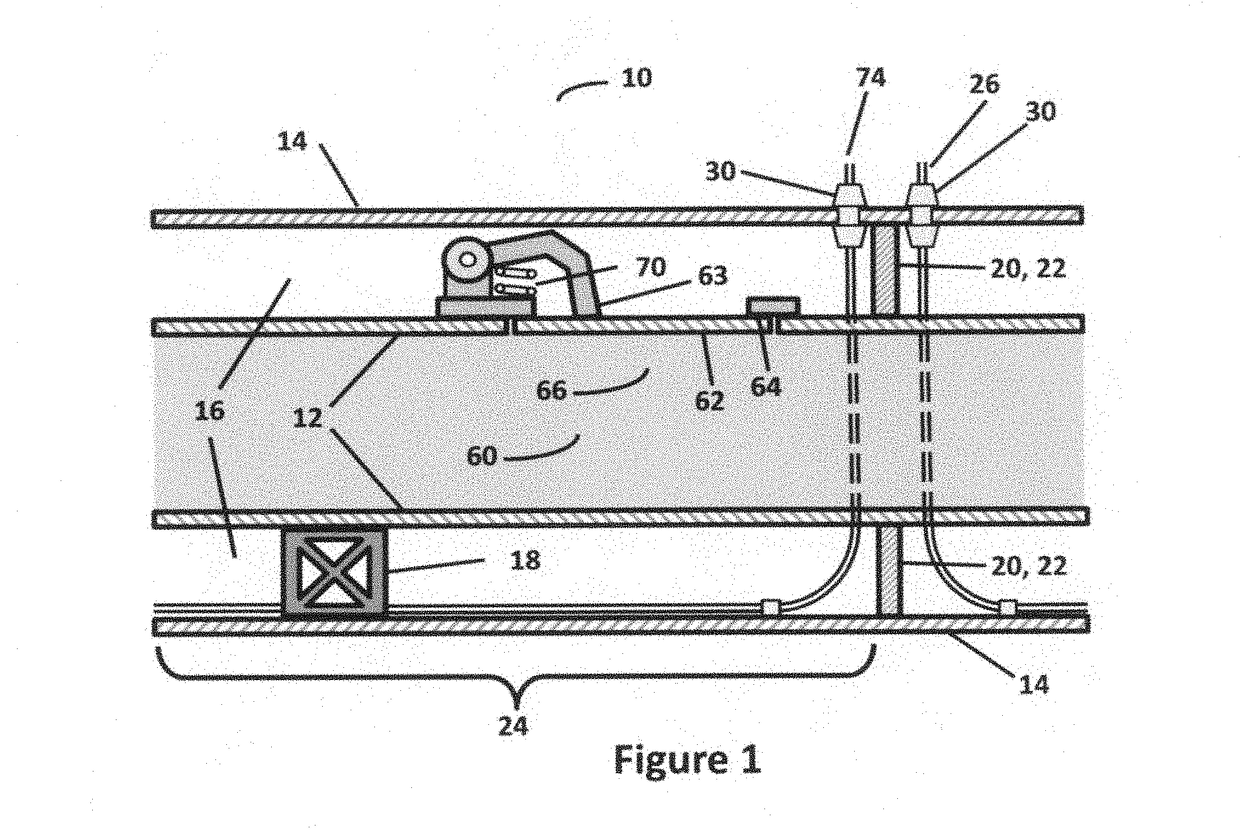Fluid spill containment, location, and real time notification device with cable based sensor
a technology of real-time notification and pipeline, applied in the direction of fluid tightness measurement, pipe couplings, instruments, etc., can solve the problems of catastrophic impact a spill or leak can have on our environment, ecosystems, humans and wildlife, and can persist for years, so as to facilitate construction approval, and reduce the probability and magnitude of pipeline release
- Summary
- Abstract
- Description
- Claims
- Application Information
AI Technical Summary
Benefits of technology
Problems solved by technology
Method used
Image
Examples
Embodiment Construction
[0044]As used herein, the term “fluid” is intended to mean gas, natural gas; liquid, including chemicals (synthetic, organic and inorganic including natural food liquids), crude oil, petroleum, oil sand oil, and water, liquefied gas, such as propane, butane, liquefied natural gas, and the like.
[0045]Referring to FIGS. 1 and 2, there is illustrated generally at 10 a fluid spill containment device. Broadly speaking, the device 10 comprises a double wall pipeline which includes an inner carrier conduit (pipe) 12 and an outer containment conduit (pipe) 14 which encases the carrier pipe 12, and which defines an interstitial space 16 around the carrier pipe 12. The carrier pipe 12 carries the fluid therealong. The interstitial space 16 receives fluid that spills from the carrier pipe 12 in the event that the carrier pipe 12 breaks or is structurally compromised. A plurality of spacers 18 are disposed substantially along the entire length of the pipeline and maintain separation between pip...
PUM
 Login to View More
Login to View More Abstract
Description
Claims
Application Information
 Login to View More
Login to View More - R&D
- Intellectual Property
- Life Sciences
- Materials
- Tech Scout
- Unparalleled Data Quality
- Higher Quality Content
- 60% Fewer Hallucinations
Browse by: Latest US Patents, China's latest patents, Technical Efficacy Thesaurus, Application Domain, Technology Topic, Popular Technical Reports.
© 2025 PatSnap. All rights reserved.Legal|Privacy policy|Modern Slavery Act Transparency Statement|Sitemap|About US| Contact US: help@patsnap.com



